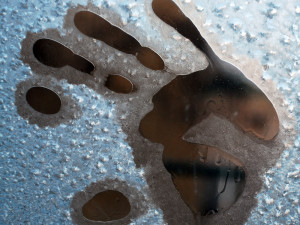
A humidity problem in your Shallowater, Texas home can really compromise your family’s comfort. But humidity problems can also quickly become an indoor air quality issue that affects the efficiency of your HVAC system.
Too much moisture in the air can create a breeding ground for mold, dust mites, and other unwelcome pathogens while intensifying chemical pollutants. Humidity can also trick your HVAC system into thinking it’s warmer than it really is, forcing it to over-cool your home. You can manage humidity levels in your home in several ways — including improving ventilation, upgrading your HVAC system, and resolving major moisture problems.
Improve Your Home’s Ventilation
Ventilating your home can help control moisture levels in the air. If the humidity outside is too high, keep your doors and windows tightly shut and use mechanical ventilation from your HVAC system to circulate air through your home.
Make sure that your bathroom, dryer, and stove hood exhaust vents are in good condition and routed to the exterior of the house. All of these ventilation systems work to extract moisture when you’re showering, doing laundry, or cooking. They should lead all the way outdoors. If not, they will dump removed moisture back into your home.
Failure to control the level of moisture from your family’s regular daily activities will attract mold growth in your kitchen and bathroom, on your ceilings, and in closets or other places where it’s dark and poorly ventilated.
Use Your Air Conditioner
When the weather’s warm enough outdoors, you can use your air conditioner to lower humidity levels inside.
Humidity refers to the amount of water vapor in the air. Heat is also a latent property of humidity: the higher the humidity, the more heat the water vapor can hold. An air conditioner works by removing heat from the air, which makes the water vapor less capable of holding heat. This, in turn, eliminates moisture.
To tackle humidity with your air conditioner, set it to several degrees lower. If the house gets too cool, then raise the temperature a little. A dehumidifier works in a similar way, by cooling the air to condense the water molecules and then re-heating the dried air.
Upgrade to a High-Efficiency HVAC Unit
Some high-efficiency heating and cooling systems are able to alter humidity conditions in the home.
Products like Amana’s work in line with each other to monitor your home’s moisture levels. You input your preferred settings using the master control, and the system adjusts all the variables.
If you need lower humidity in warm weather, you can make the air conditioner or heat pump work slowly to remove moisture from the air without over-cooling.
Consider a Dehumidifier or Humidifier
A humidifier or dehumidifier might be the perfect solution if you’ve exhausted other options. A portable unit is suitable for humidity problems that are limited to one area of your house — say your child’s room or your basement. If there is a humidity issue in the entire home, consider a whole-home humidifier or dehumidifier that can work in tandem with your HVAC system.
Resolve Major Moisture Issues
Too much moisture in the air could be a sign of a bigger structural issue, such as an easily flooded basement, a leaky roof, or water accumulating around the foundation of the home. To fix any of these problems, find the source of water entry and eliminate it.
Make sure your roof’s structure is secure and properly maintained; fix any holes or leaks and replace roofing material if necessary. If rainwater is constantly flowing toward your house and settling around the foundation, this could also be the source of basement flooding or moisture.
Landscape your property so that rainwater will flow away from your home’s base, and make sure that downspout drains are pointing several feet away from the foundation.
If you need help with your humidity control efforts, give Bruce Thornton Air Conditioning a call at 806-589-1014 to discuss possible solutions. Ask about our whole-home dehumidifiers or one of our innovative heating and cooling systems.
Image provided by Shutterstock










